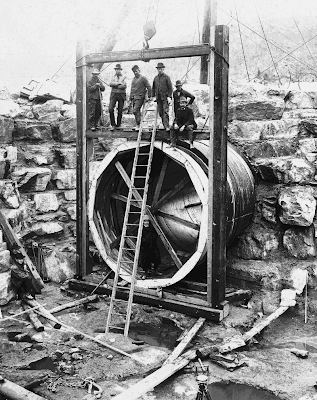 Over 7,000 Continental Army soldiers and 500 of their family members encamped at New Windsor, New York, during the winter of 1782-83. From various walks of life, these patriots looked to the future with some hope and a good deal of trepidation. Sunday May 15, from 2:00 to 3:00 PM learn about a few of the camp residents, including, Oliver Cromwell, an African-American soldier in the New Jersey Line and Henry Kneeland, a Hessian deserter with the Massachusetts troops. A military musket and cannon firing follows the presentation.
Over 7,000 Continental Army soldiers and 500 of their family members encamped at New Windsor, New York, during the winter of 1782-83. From various walks of life, these patriots looked to the future with some hope and a good deal of trepidation. Sunday May 15, from 2:00 to 3:00 PM learn about a few of the camp residents, including, Oliver Cromwell, an African-American soldier in the New Jersey Line and Henry Kneeland, a Hessian deserter with the Massachusetts troops. A military musket and cannon firing follows the presentation.
Following the capture of British forces by the allied armies of France and America, at Yorktown, Virginia, in the fall of 1781, the northern Continental Army returned to the Hudson Highlands. The destruction of the principal British field army in the south broke England’s will to continue the struggle. In the fall of 1782, near New Windsor, over 7,000 Continental Army soldiers built a city of 600 log huts near New Windsor. Along with some of their family members, they braved the winter and kept a wary eye on the 12,000 British troops in New York City, just 60 miles away and waited to see if the spring brought continued fighting or the announcement of peace.
Everyone is familiar with George Washington, the larger than life father of our country, but what about the individual soldiers who suffered unspeakable hardships and the intrepid band of family members who by choice or necessity followed the Continental Army. Despite years of research by eminent scholars, the common people of the Revolutionary War era still remain elusive- phantoms who appear in the historical record for a brief instant and then disappear just as quickly..
New Windsor Cantonment State Historic Site is co-located with the National Purple Heart Hall of Honor on Route 300, 374 Temple Hill Road, in New Windsor, NY, just three miles south of the intersection of I-87 and I-84. For more information call (845) 561-1765 ext. 22.







